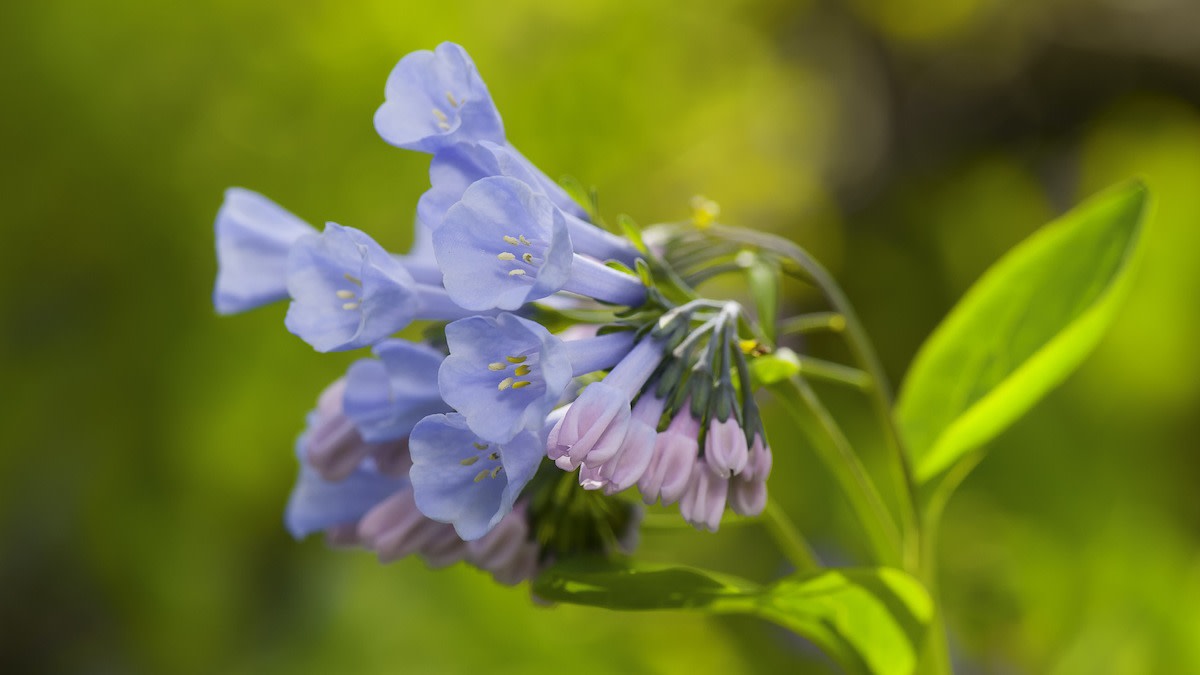Virginia Bluebells Care Tips: How to Grow Virginia Bluebells
Written by MasterClass
Last updated: Nov 18, 2021 • 3 min read
The pink buds and blue flowers of Virginia bluebells are a welcome sight in early spring throughout much of eastern North America.
Learn From the Best
What Are Virginia Bluebells?
Virginia bluebells (Mertensia virginica) are wildflowers belonging to the borage family (Boraginaceae). They go by many common names beyond Virginia bluebell, including Eastern bluebell, Virginia cowslip, lungwort oysterleaf, and Roanoke bells. This plant’s native range includes the full northeastern quadrant of the United States, as well as southern Canada. You are most likely to find this herbaceous perennial in shady woodlands and moist floodplains.
The Virginia bluebell plant grows naturally in USDA hardiness zones three through eight, with some plants appearing in USDA zone nine. They are spring ephemerals with a typical bloom time beginning in March or April and lasting through the early summer. Their seeds ripen in early summer, after which point the plant goes dormant for several months. Gardeners favor Virginia bluebells for their pink flower buds, blue flowers, and hearty green foliage. Pollinators like bumblebees and hummingbirds rely on these plants as a food source.
How to Plant Virginia Bluebells
Virginia bluebells are commonly planted alongside daffodils and tulips. Learn how to establish these flowers in your garden.
- 1. Find a shady spot. Virginia bluebells do best in moist soil filled with nutrients. These plants can take upwards of two months to germinate, during which time you must keep the soil moist. Planting them in full shade will help you in this regard.
- 2. Prepare the soil. You need sufficient soil moisture to germinate Virginia bluebell seeds. Start by working the soil, adding water as needed and mixing in fertilizer if necessary to ensure nutrient-rich soil.
- 3. Place the seeds on the soil surface. You can add a quarter-inch of soil on top of the seeds to prevent birds from eating them, but they should have some exposure to air to germinate properly.
- 4. Keep the soil moist. Aim to keep the soil moist but not soaking wet while the seedlings take root.
- 5. Once the plants are established, they will reproduce naturally. Mature Virginia bluebell plants can self-seed and spread throughout your garden. However, this can take a long time. Some seedlings will take two years before they begin to flower. In the long run, patience will be rewarded.
How to Grow and Care for Virginia Bluebells
The key to growing Virginia bluebells is offering plenty of soil moisture, nutrients, and shade. Keep the following factors in mind as you grow these plants.
- 1. Hardiness: Virginia bluebells do best in cool, moist weather, which is why you are more likely to find these plants in Minnesota than in their namesake state of Virginia. For the best results, plant these wildflowers if you live in USDA hardiness zones three through eight.
- 2. Soil: This species needs loamy, nutrient-rich soil. It will not do well in sand or heavy clay.
- 3. Sunlight: Virginia bluebells thrive in full shade, but they can also handle part shade provided that it doesn't get too hot.
- 4. Water: This species has an efficient taproot system, but it still needs plenty of water. It is a native plant along northern riverbeds, so be sure to give it the water it needs.
- 5. Mulching: Add a layer of leaf mulch to the soil surrounding your flowers in the fall when the plant is dormant. Beyond nutrient-rich mulch, mature plants do not need fertilizer to thrive.
- 6. Pruning: Virginia bluebells self-seed from dead flower heads. You must deadhead your flowers if you don't want the plants to spread beyond their existing garden plot.
How to Propagate Virginia Bluebells
You can propagate Virginia bluebells by growing them from seed, as described above. You can also propagate them by dividing mature plants.
- 1. Dig out the plant. Dig out a circle surrounding the plant, starting six inches from the base of the plant. Dig deep enough to pull out the fragile taproot without breaking it.
- 2. Separate the rhizomes. Virginia bluebell plants form underground horizontal roots called rhizomes that connect multiple plants. You will need to separate these rhizomes and make sure each separated plant has its own node, or spot from which leaves can grow.
- 3. Let the bare roots dry out. Do not immediately replant your dug-up specimens. Let the roots sit in a cool, dry place for two or three days.
- 4. Replant your plants in loamy, moist, nutrient-rich soil. Keep the soil moist to help the plant establish itself. If you transplant your cutting in the late summer or early fall, there is a good chance you will see the familiar pink buds and blue flowers by the following spring.
Learn More
Grow your own garden with Ron Finley, the self-described "Gangster Gardener." Get the MasterClass Annual Membership and learn how to cultivate fresh herbs and vegetables, keep your house plants alive, and use compost to make your community—and the world—a better place.
